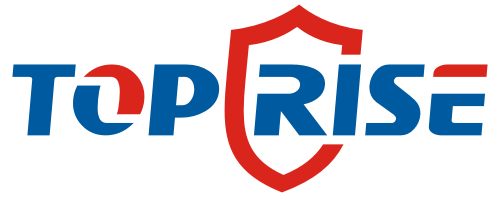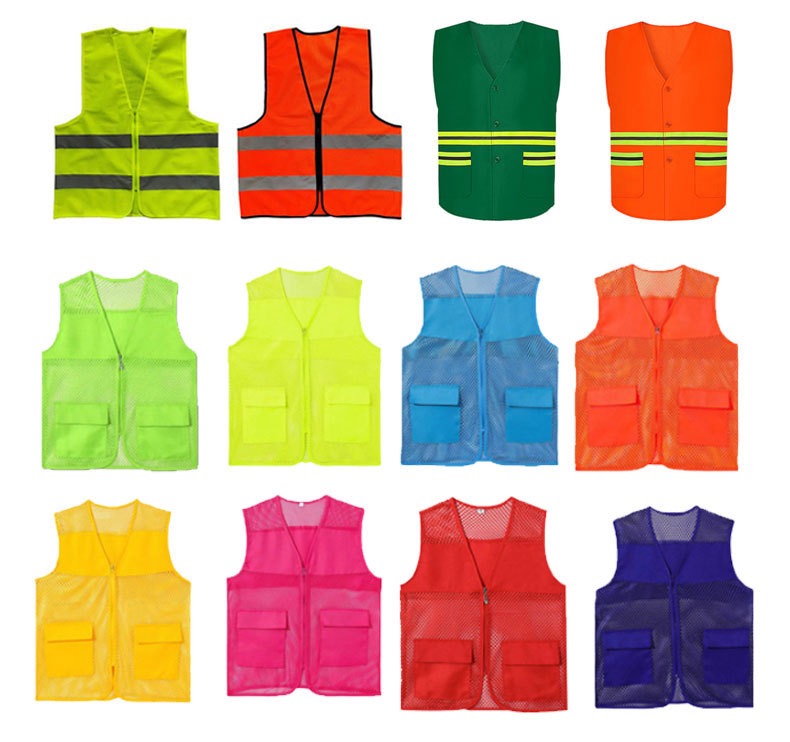
Ningbo Toprise Security Products Co.,LTD, as one of the China’s leading reflective safety vest manufacturers since 2009, would like to share the reflective safety vest manufacturing steps to our dear customers.
Step1:Choose the Right Materials for Vest Manufacturing
Fluorescent Fabric: High-visibility vests are typically made of fabrics in fluorescent yellow, orange and green. The fabric is in polyester, which is durable, lightweight and highly visible under sun light and artificial lighting.
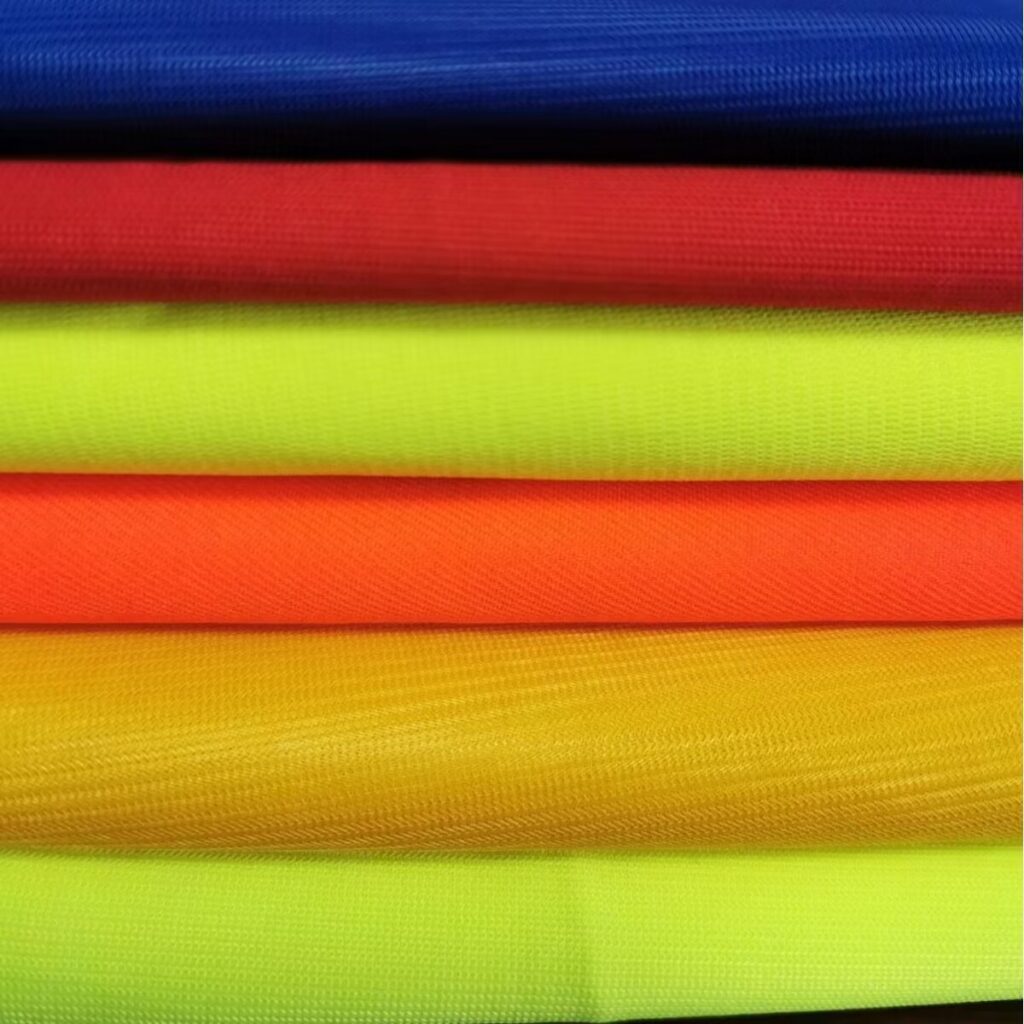
Breathable Mesh: To ensure breathability and comfort for workers in hot or humid environments, we select mesh fabric for producing construction vests and industrial vests.
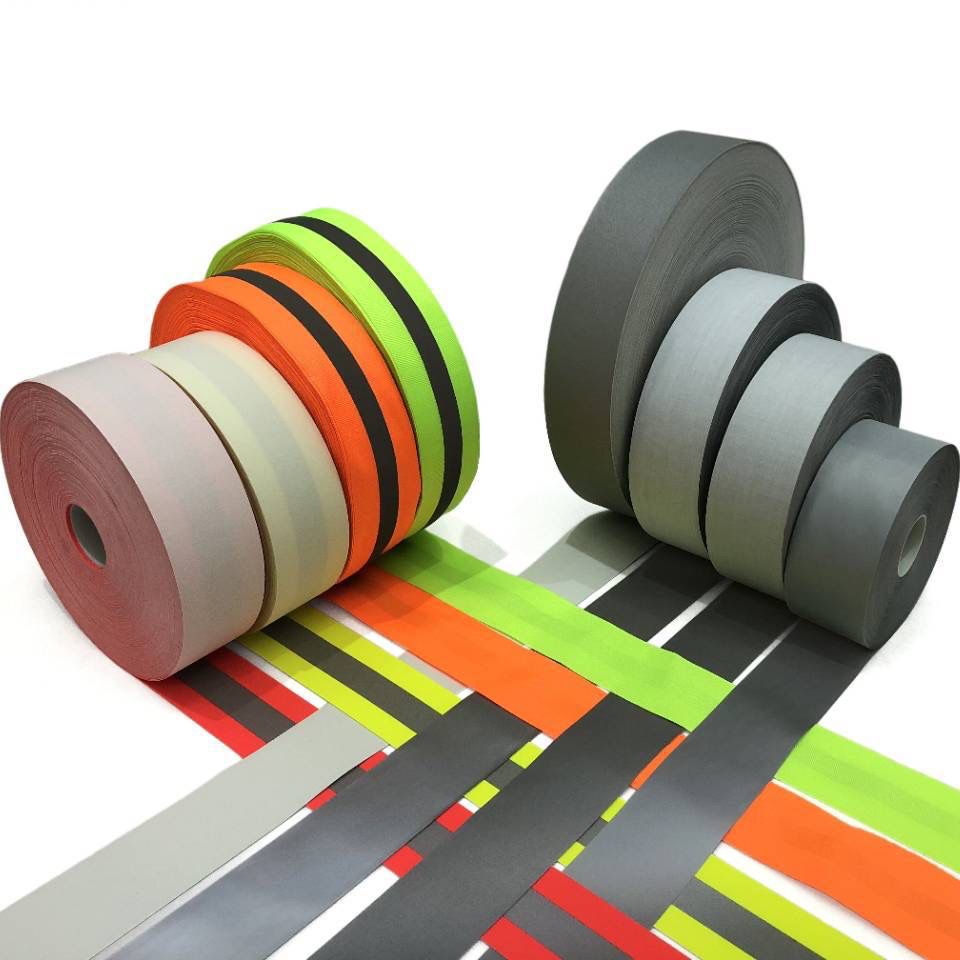
Reflective Tape: The reflective tape is critical in enhancing visibility of safety vest under dim-light conditions. Generally speaking, we select micro-prism reflective tape or glass bead reflective tape. The glass bead reflective tape is cheaper, softer and lightweight for easy movement and of better reflective performances in sunny days, but not so abrasion-resistant as other tapes and of poorer reflective performances once getting wet. The micro-prism reflective tape is a bit costly and rigid, but excellent in visibility in wet working environment, of better reflective performance and abrasion resistant.
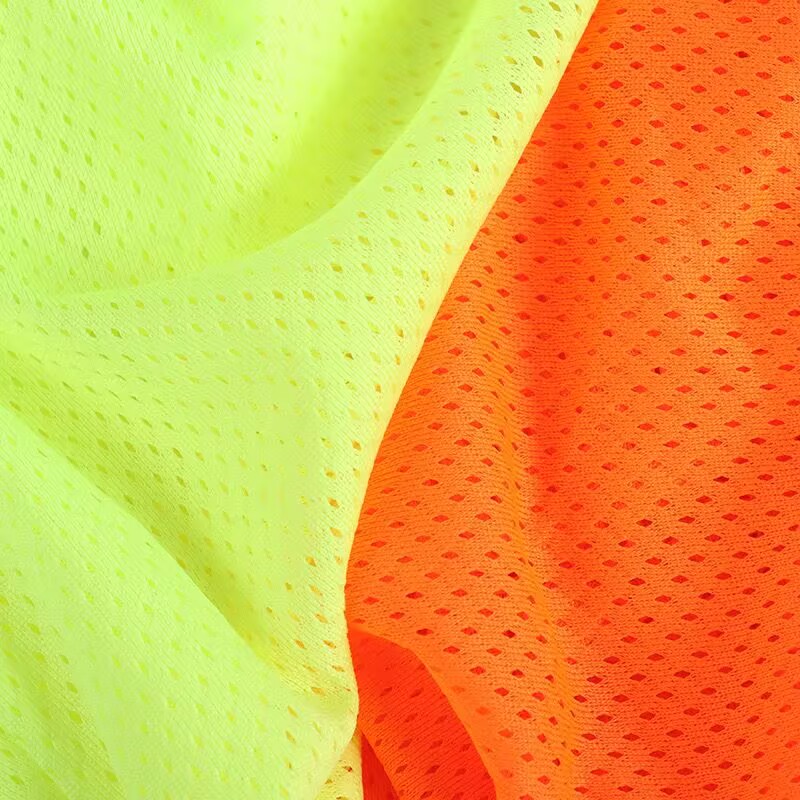
Before the production, all the materials for safety vest manufacturing should be checked carefully to ensure meeting safety standards like ANSI (American National Standards Institute) or OSHA (Occupational Safety and Health Administration) regulations.
Step 2: Cut the Fabric
Cut into the shapes needed after the design is finalized. Like the front, back, and side panels.
- Automated cutting machines are often used for vest manufacturing to ensure precision. It is suitable for bulk order production.
- Cutting by hand. It’s still very popular although we have automated cutting machines, especially when the order is not so big. It’s more often a better choice for smaller quantity and high requirements for customization on design and size.
Step 3:Hot Pressing or Sewing the Reflective Tape
Both sewn-on and heat-pressed reflective tapes are popular methods for applying reflective materials to safety vests. Here are the advantages and disadvantages of each method:
Sewn-On Reflective Tape
Advantages:
- Durability: Sewn-on tape is more durable, especially in garments that are subjected to heavy wear and washing. The stitching secures the tape, preventing it from peeling or coming loose over time.
- Longevity: This method ensures that the reflective tape lasts longer, particularly in high-stress environments such as construction or industrial work.
- Flexibility: Works well with various fabrics, including those that might not handle heat well, making it versatile for different applications.
- Easy to Repair: If the reflective tape starts to come off, it can be easily re-stitched without needing specialized equipment.
Disadvantages:
- Aesthetic Issues: The stitching can sometimes be visible, which may affect the overall appearance of the garment, especially if the thread color does not match.
- Less Flexibility: Sewn-on tapes may not flex as easily with the garment, potentially reducing comfort, especially in garments requiring high flexibility like athletic gear.
- Time-Consuming: Sewing on reflective tape is more time-consuming than heat pressing, leading to higher labor costs in production.
Heat-Pressed Reflective Tape
Advantages:
- Smooth Appearance: Heat-pressed reflective tape is applied directly to the fabric, resulting in a sleek, clean look without visible stitching, making it aesthetically pleasing.
- Cost-Efficient: The heat press process is generally faster, reducing labor costs and increasing production efficiency.
- Flexible: Heat-pressed tape tends to be more flexible and comfortable to wear since it doesn’t have the stiffness of sewn-on tape.
- Better for Lightweight Garments: Works well on lightweight fabrics without adding bulk, making it ideal for garments like sportswear or rainwear.
Disadvantages:
- Less Durable: Heat-pressed tape can start to peel or crack over time, especially after frequent washing or exposure to high heat. This makes it less suitable for garments that will undergo heavy use or repeated laundering.
- Sensitive to Heat: High heat during application or subsequent washing can cause the tape to degrade faster, especially if care instructions aren’t followed.
- Difficult to Repair: Once heat-pressed reflective tape starts to come off, it is harder to repair compared to sewn-on tape, often requiring re-application using specialized equipment.
The choice between sewn-on and heat-pressed reflective tape will depend on the intended use, durability requirements, and the garment type.
Step 4: Print Logo on Protective Vests
· Screen Printing:
- Cost-effective for larger production runs and suitable for detailed designs. Works well with non-reflective ink and is great for vibrant, bold logos.
- Best For: Simple, non-reflective logos for standard safety vests.
· Heat Transfer Vinyl (HTV):
- HTV logos are flexible and comfortable, offering a smooth and professional look. Reflective vinyl can be used for extra visibility.
- Best For: Custom, reflective logos or small production runs.
· Embroidery:
- Provides a durable, high-quality look. Embroidered logos are very resistant to wear and washing.
- Best For: Premium, durable, non-reflective logos.
· Sewn-on Patches:
- Durable and easy to repair if damaged. Patches can include reflective materials and intricate designs.
- Best For: Heavy-duty vests that require long-lasting logos.
Step 5: Put the Fabric Pieces Together
After the reflective strips and logo are ready, the next step is to assemble the other parts of the vest.
– Sewing process: Sew the front and rear panels, sides and shoulders together to ensure the seams are strong and durable.
– Functional design: If the vest is designed with zippers, pockets or any other accessories, these will also be sewn on together.
Step 6: Piping and Reinforcing
For better durability, the fluo fabric edges need to be hemmed in case of fraying. Piping on a safety vest can not only enhance the structure, but also sometimes improve visibility. When selecting piping material for a safety vest, it’s important to consider durability, comfort, and reflective properties. Here are common materials used for piping on safety vests:
Reflective Piping
Material: Usually made of polyester or nylon fabric with reflective threads or a reflective coating.
It increases the visibility of the safety vest and ideal for uses in high-risk environments like construction or road work. But it’s also more expensive than regular one.
Polyester Piping
Material: Polyester fabric, often blended with cotton or spandex for flexibility.
It’s durable, lightweight, and resistant to shrinking and wrinkling. Also it’s relatively inexpensive and various colors are available to go with the vest.
After piping material is confirmed, then we could proceed with the piping craft.
– Automatic hemming: Use thickened or reinforced materials to hem the edges of the vest to improve durability and comfort.
– Reinforced areas: Reinforce places such as shoulders and sides for longer use in harsh work environments.
Step7: Quality Control
Each of the safety vest shall undergo strict quality control like checking the durability of the stitching, the proper alignment of reflective elements, and the overall comfort and fit. Each safety garment must meet specific safety standards, such as those outlined by ANSI for safety clothing and safety equipment.
Step 8: Packaging and Distribution
After quality control, the safety apparel are packaged and prepared for distribution all over the world. The packing may include care instructions, sizing, and safety certifications.
The above is the detailed reflective safety vest production process of our Ningbo Toprise Security Products Co., Ltd. If you have any questions about the production of reflective safety vests or have any demand for reflective safety vests, feel free to contact us for communication and a quotation.
